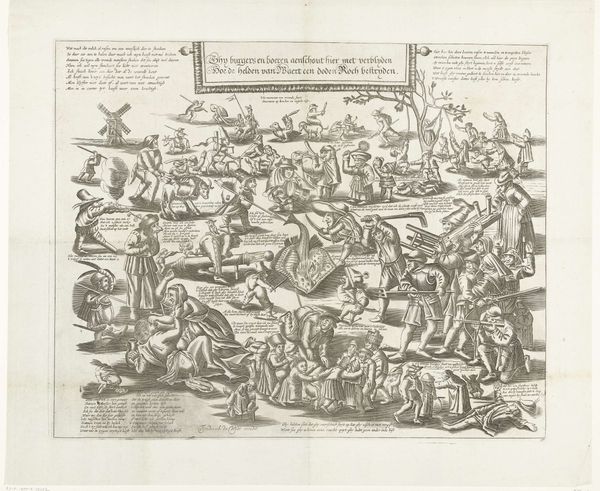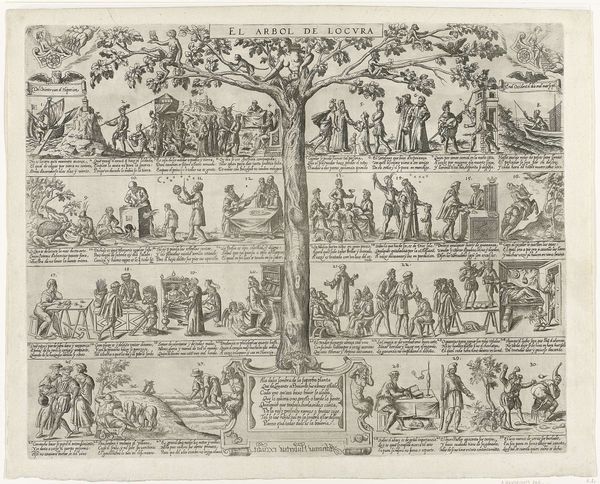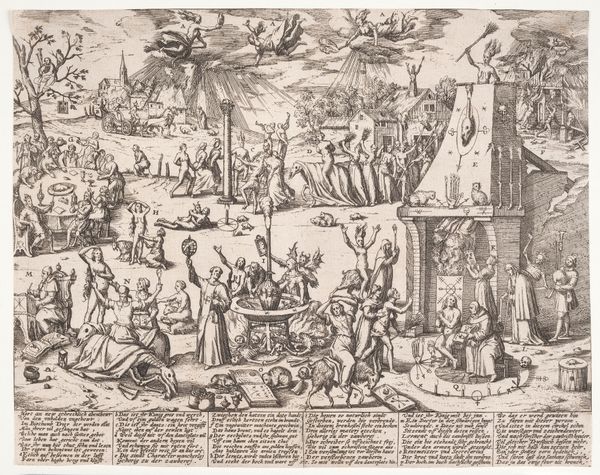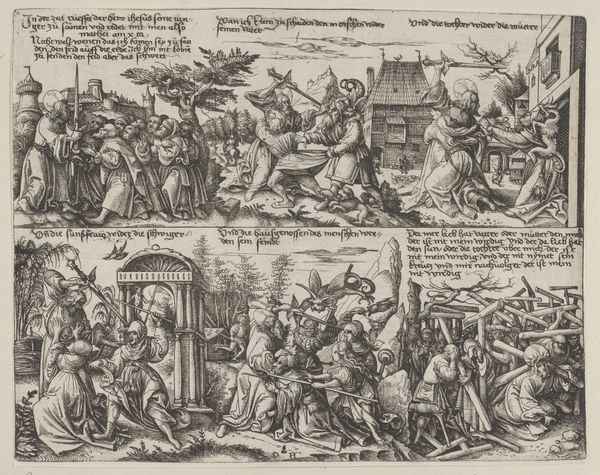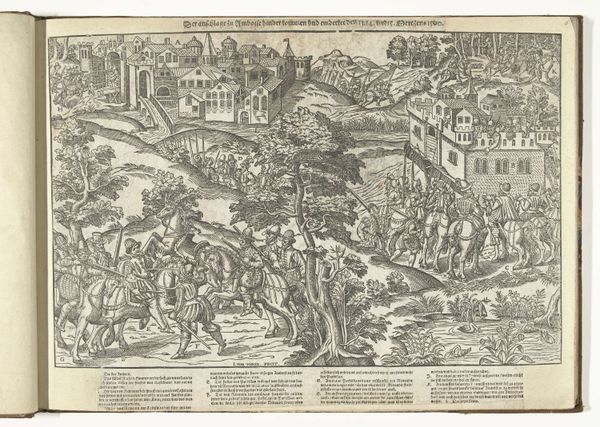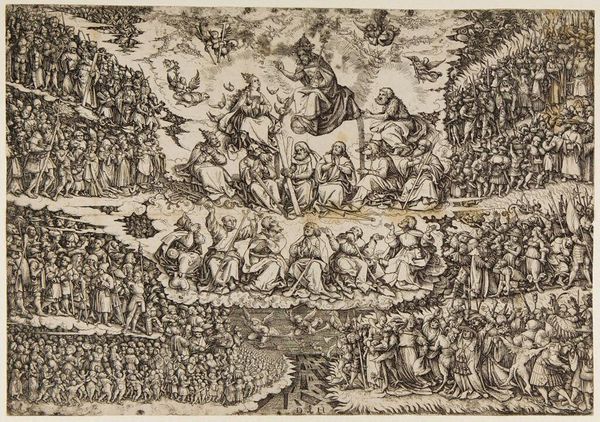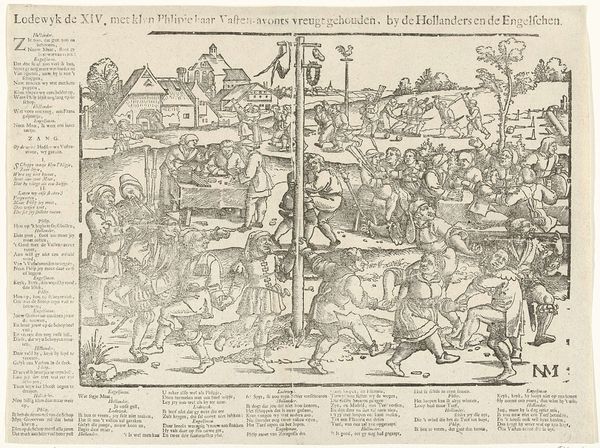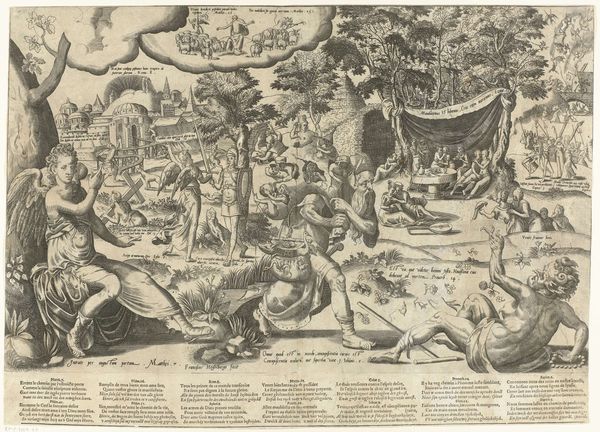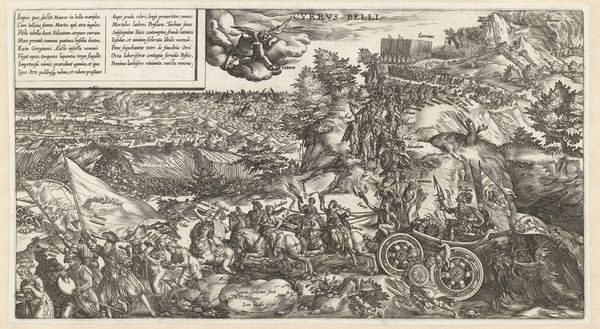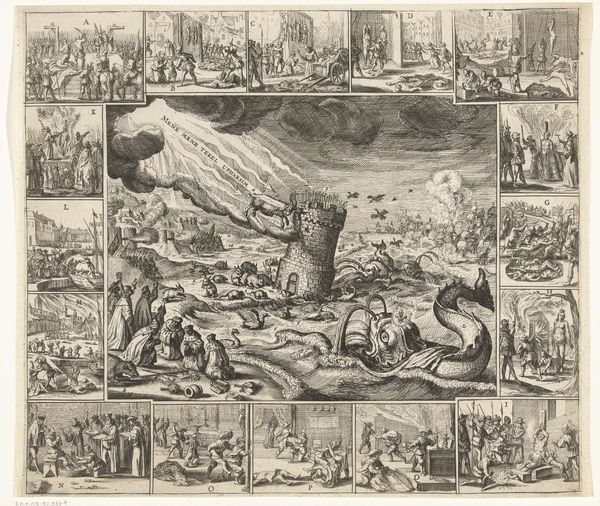
print, engraving
#
narrative-art
#
baroque
# print
#
pen illustration
#
genre-painting
#
engraving
Dimensions: height 398 mm, width 510 mm
Copyright: Rijks Museum: Open Domain
This etching, "De Rogstekers van Weert," was made around 1650 by an anonymous artist. Its lines are brought to life through the intricate process of etching, which likely involved coating a metal plate with wax, drawing a design, and then biting the plate with acid. The material itself, metal, is key to understanding this artwork. Metal resists, it’s difficult to work with, and yet the etcher was able to create an impressive amount of detail and visual information. Consider how this etching, a relatively accessible medium, democratized visual storytelling. While painting remained the realm of the wealthy, etchings allowed for the mass production and distribution of images. It offers a glimpse into a pivotal moment when art began to circulate more widely, influencing public opinion and cultural values. The meticulous work required to produce such a detailed image speaks volumes about the artist's dedication. The act of etching becomes a physical manifestation of social and political commentary, demonstrating the power of craft in shaping cultural narratives.
Comments
No comments
Be the first to comment and join the conversation on the ultimate creative platform.

